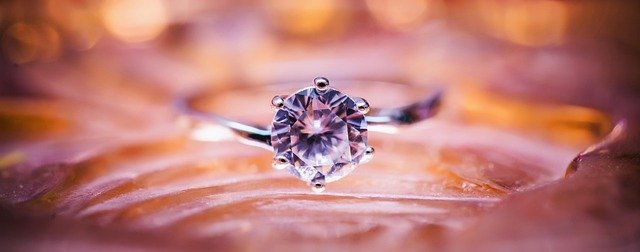Lab-Created vs. Natural Diamonds: Key Differences in Engagement Rings
When choosing an engagement ring, one of the most significant decisions couples face today is selecting between lab-created and natural diamonds. Both options offer stunning beauty and exceptional durability, but they differ considerably in origin, cost, and market perception. Understanding these key differences can help you make an informed decision that aligns with your values, budget, and preferences for this once-in-a-lifetime purchase.

What Are Lab-Created Diamonds and How Are They Made?
Lab-created diamonds, also known as synthetic or cultured diamonds, are genuine diamonds produced in controlled laboratory environments rather than formed naturally deep within the Earth. These diamonds are created using two primary methods: High Pressure High Temperature (HPHT) and Chemical Vapor Deposition (CVD). Both processes replicate the natural conditions that create diamonds, resulting in stones that are chemically, physically, and optically identical to their natural counterparts.
The HPHT method recreates the intense pressure and heat found in the Earth’s mantle, while CVD uses a carbon-rich gas mixture that crystallizes into diamond form. The entire process typically takes several weeks to months, compared to the billions of years required for natural diamond formation. These lab-grown diamonds possess the same hardness rating of 10 on the Mohs scale and exhibit identical brilliance and fire as natural diamonds.
How Do Natural Diamonds Form and What Makes Them Unique?
Natural diamonds form approximately 90 to 120 miles beneath the Earth’s surface under extreme pressure and temperature conditions over billions of years. These precious stones are brought closer to the surface through volcanic eruptions and are then extracted through mining operations. Each natural diamond carries unique characteristics called inclusions, which serve as fingerprints that tell the story of its ancient formation process.
The rarity and geological history of natural diamonds contribute to their traditional appeal and market value. Many consumers appreciate the romantic notion that their diamond formed billions of years ago, making each stone truly one-of-a-kind. Natural diamonds have been the traditional choice for engagement rings for decades, carrying cultural significance and generational value that many couples find meaningful.
Are Lab-Created Diamonds as Durable as Natural Ones?
Both lab-created and natural diamonds share identical physical properties, including hardness, durability, and optical characteristics. They both rank 10 on the Mohs hardness scale, making them equally resistant to scratching and suitable for daily wear in engagement rings. Lab-created diamonds exhibit the same brilliance, fire, and scintillation as natural diamonds because they have the same crystal structure and refractive index.
Professional gemologists require specialized equipment to distinguish between lab-created and natural diamonds, as they are virtually indistinguishable to the naked eye. Both types can be cut into various shapes and styles, from classic round brilliant to modern princess cuts. The durability factor should not influence your decision, as both options will maintain their beauty and structural integrity throughout a lifetime of wear.
How Does Diamond Pricing Differ Between Lab-Created and Natural?
Diamond pricing represents one of the most significant differences between lab-created and natural stones. Lab-created diamonds typically cost 20-40% less than comparable natural diamonds of similar size, cut, color, and clarity grades. This price difference makes affordable engagement rings more accessible to couples working within specific budget constraints without compromising on diamond quality or appearance.
Natural diamond prices reflect their rarity, mining costs, and established market demand, while lab-created diamond costs primarily depend on production expenses and technological improvements. The cost of diamonds continues to evolve as lab-creation technology advances and becomes more efficient. Market trends suggest that lab-created diamonds are becoming increasingly popular among younger consumers who prioritize value and ethical considerations.
What Environmental and Ethical Considerations Should You Know?
Lab-created diamonds offer a more environmentally sustainable option compared to traditional diamond mining. The production process requires significantly less land disruption, water usage, and produces fewer carbon emissions per carat. Additionally, lab-created diamonds eliminate concerns about conflict diamonds or unethical mining practices that have historically affected certain regions.
Many consumers in worldwide markets are increasingly conscious of their purchase’s environmental impact and social responsibility. Lab-created diamonds provide peace of mind for couples who want to ensure their engagement ring represents love without contributing to environmental degradation or supporting potentially harmful mining practices. However, natural diamond companies have also implemented various certification programs and ethical sourcing initiatives to address these concerns.
Real-World Cost Comparison and Provider Options
Understanding actual market prices helps couples make informed decisions about their engagement ring investment. The following comparison reflects typical pricing for round brilliant diamonds across different providers and origins.
| Diamond Type | Provider | 1 Carat Price Range | Key Features |
|---|---|---|---|
| Natural Diamond | Blue Nile | $3,000-$8,000 | GIA certified, traditional appeal |
| Lab-Created | Brilliant Earth | $1,200-$3,500 | Ethically sourced, sustainable |
| Natural Diamond | James Allen | $2,800-$7,500 | 360° viewing, extensive selection |
| Lab-Created | Clean Origin | $1,000-$3,200 | Exclusively lab-grown, certified |
Prices, rates, or cost estimates mentioned in this article are based on the latest available information but may change over time. Independent research is advised before making financial decisions.
Conclusion
The choice between lab-created and natural diamonds ultimately depends on your personal priorities, budget, and values. Lab-created diamonds offer exceptional value, environmental benefits, and identical beauty at a lower cost, making them ideal for budget-conscious couples seeking affordable engagement rings. Natural diamonds provide traditional appeal, potential investment value, and the romance of geological rarity. Both options create stunning engagement rings that symbolize your commitment, so focus on what matters most to you and your partner when making this important decision.




